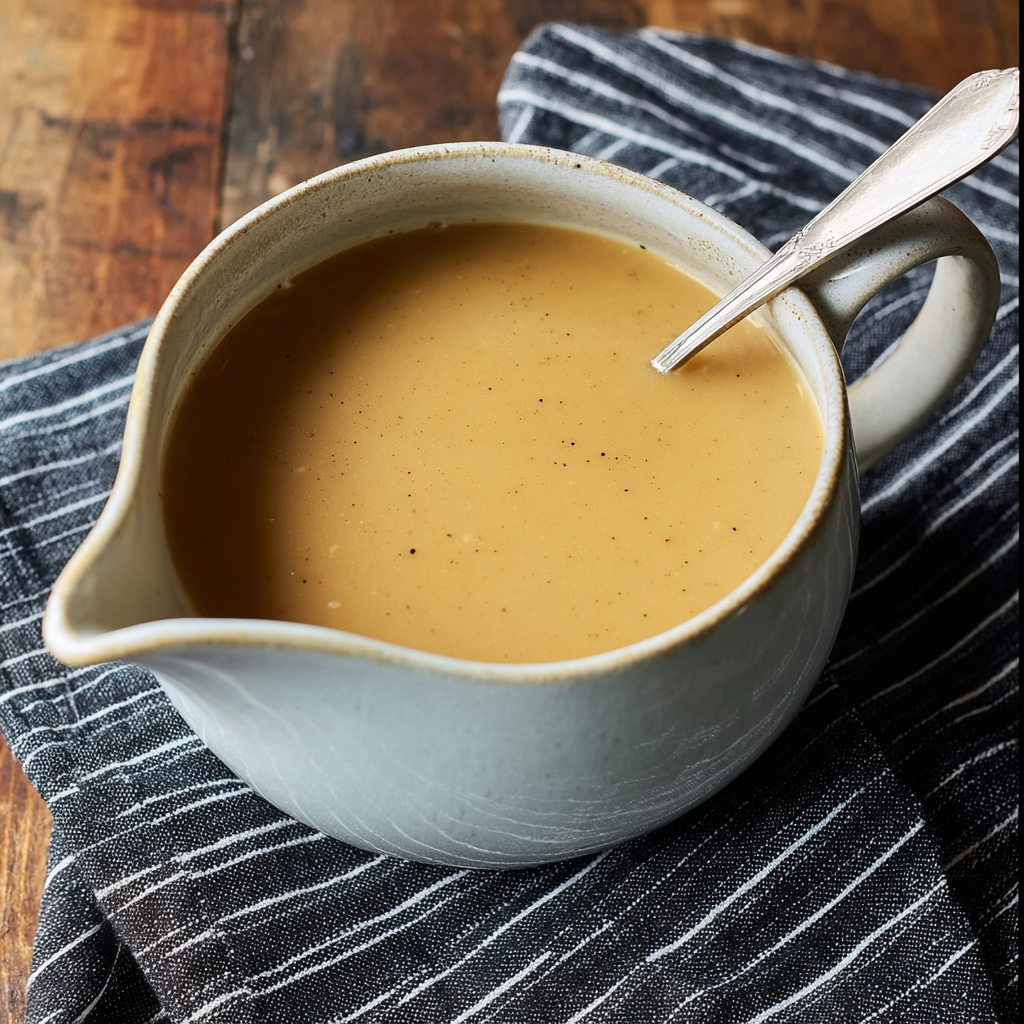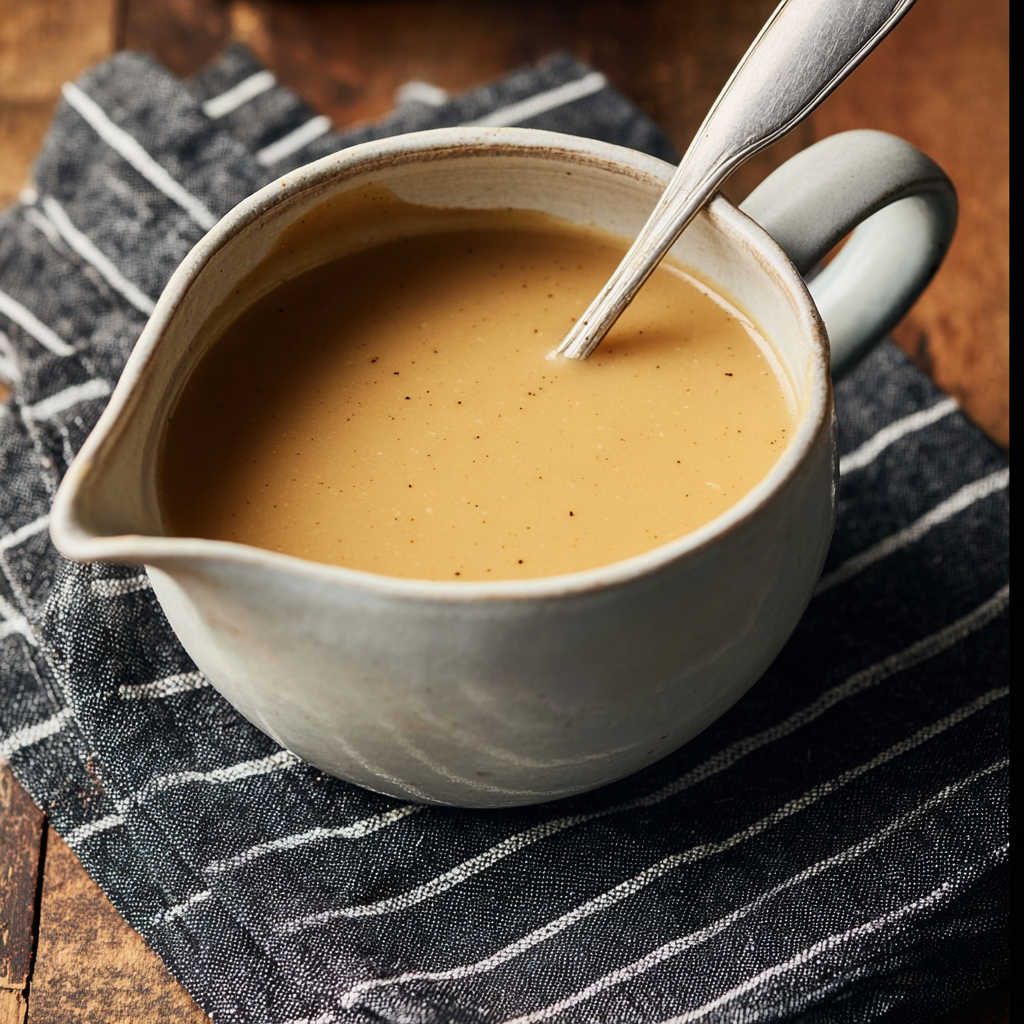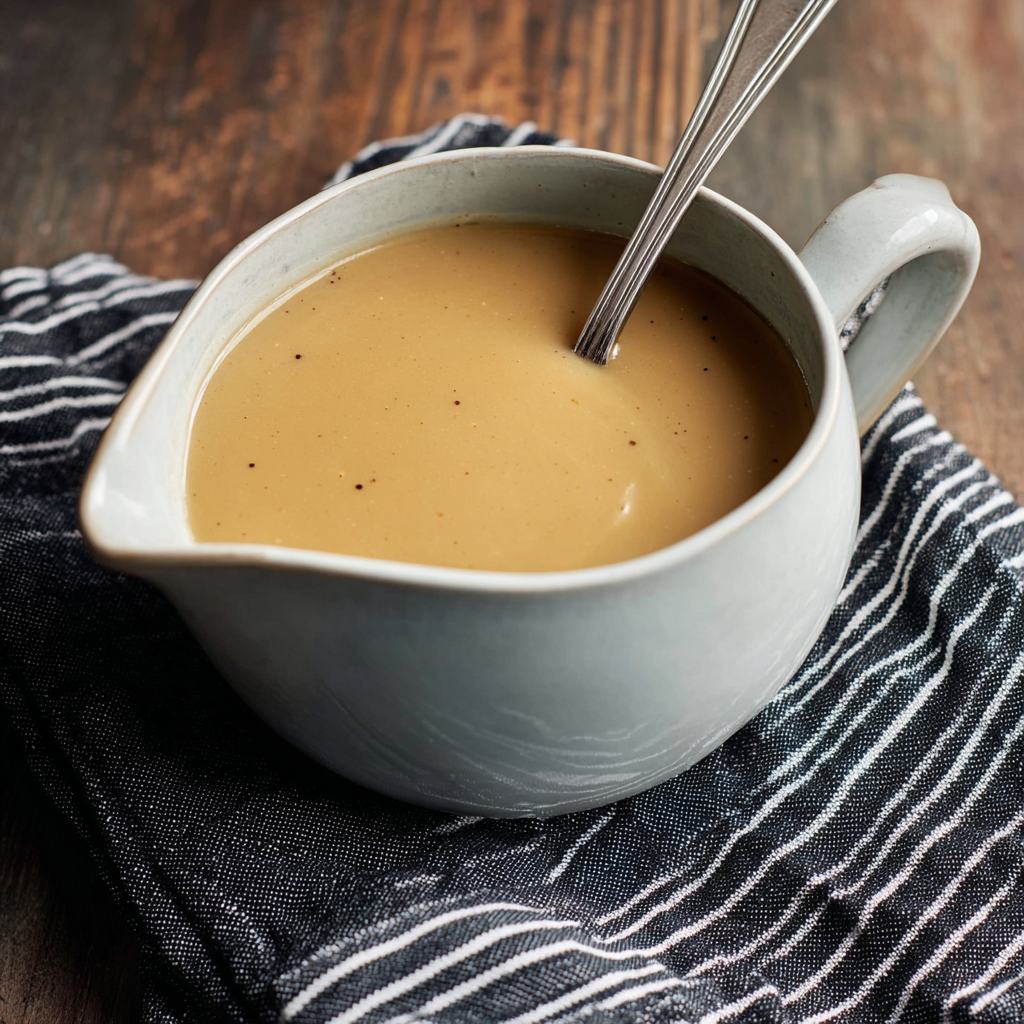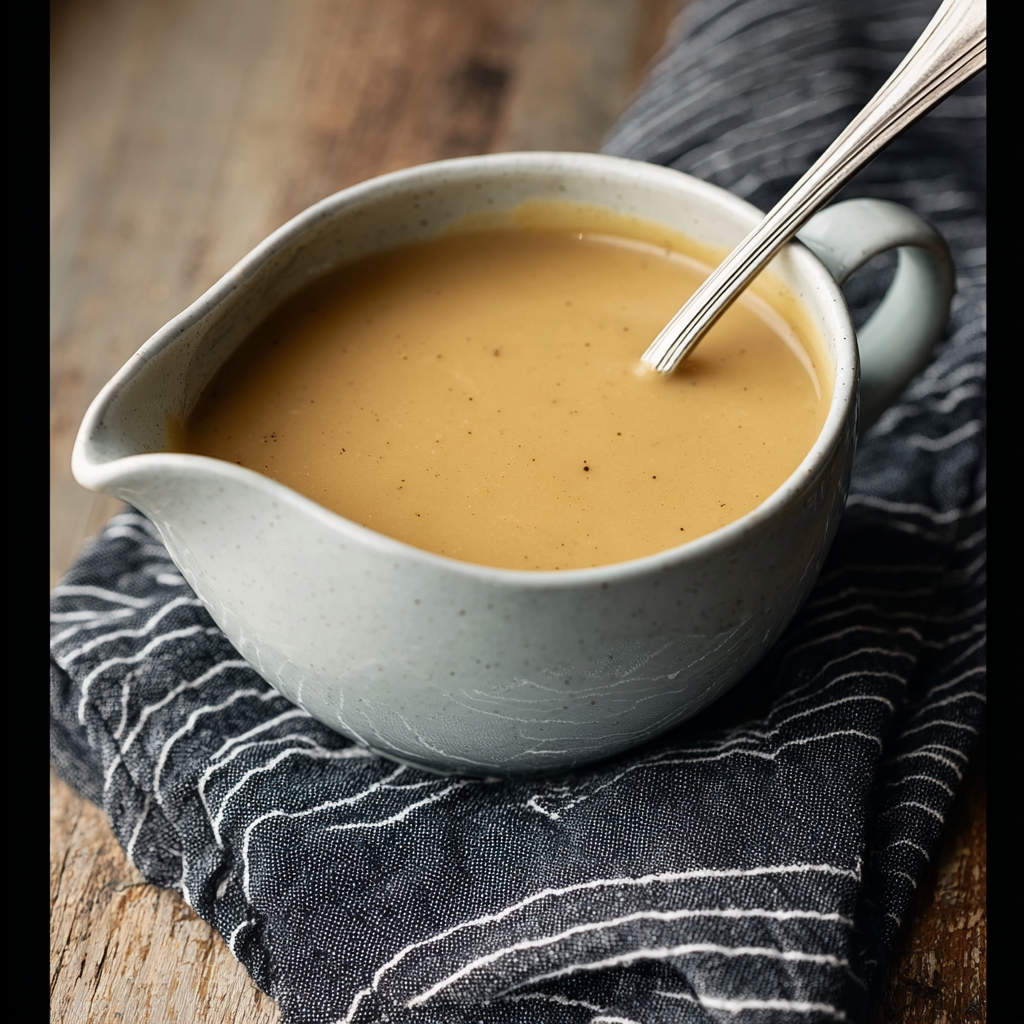1. Introduction to the Recipe
A Thanksgiving meal without gravy? Not a chance. This Homemade Turkey Gravy recipe is the secret to turning your roasted turkey drippings into liquid gold. Rich, savory, and seasoned with a splash of white wine and fragrant herbs, it’s a must-have for your holiday table—or anytime you roast a bird.
Made from pan drippings, flour, and broth, this gravy thickens into a silky sauce that pulls your entire plate together. Whether you’re pouring it over turkey, mashed potatoes, stuffing, or all of the above, it brings depth and comfort in every spoonful.
This recipe is simple but adaptable. No pan drippings? Use butter and broth instead. Want to layer in extra flavor? Add wine or sherry, and a mix of rosemary, sage, and thyme. You can even customize it to be gluten-free or vegetarian with a few easy tweaks.
New to gravy-making? Learn how to make gravy without lumps or troubleshoot common gravy problems.
Let’s turn those drippings into something unforgettable.
2. Basic Recipe: Ingredients and Instructions
Print
Homemade Turkey Gravy – Rich, Savory & Perfect Every Tim
Description
This Homemade Turkey Gravy recipe is rich, savory, and easy to make with pan drippings, broth, and fresh herbs.
Ingredients
- Pan drippings from a 12–15 lb whole roasted turkey
- 1 to 2 cups chicken broth (low sodium; vegetable broth also works)
- Unsalted butter (as needed to supplement drippings)
- 1/4 cup all-purpose flour
- Kosher or sea salt (to taste)
- Freshly ground black pepper (to taste)
- 1–2 tablespoons dry white wine or dry sherry
- 1 teaspoon fresh rosemary, sage, and thyme combined (finely minced, stems removed)
Instructions
- Collect drippings: After roasting the turkey, pour the drippings into a fat separator or measuring cup. Let fat rise to the top, then skim it off and set it aside.
- Supplement with butter if needed: Measure your fat—if you have less than 1/4 cup, add unsalted butter until you reach that amount.
- Make the roux: In a medium saucepan over medium heat, add the fat (or fat + butter) and whisk in the flour. Cook for 2–3 minutes, whisking constantly, until golden and bubbly.
- Add broth gradually: Slowly whisk in the broth and pan juices, stirring constantly to prevent lumps. Start with 1 cup and add more to reach your desired consistency.
- Season: Stir in wine or sherry and the minced herbs. Simmer for 5–10 minutes, stirring occasionally. Taste and adjust salt and pepper.
- Serve hot: Pour into a gravy boat and serve immediately, or keep warm on the stove until ready.
Notes
For smooth gravy, always add liquids slowly and whisk vigorously.
If using dried herbs, reduce quantity to 1/3 teaspoon each.
You can strain gravy through a sieve for an ultra-smooth finish.
3. Advanced Techniques
Deglaze the Roasting Pan First
Before pouring out the drippings, place your roasting pan over two burners and deglaze it with white wine or broth, scraping up the browned bits (fond). This adds deep roasted flavor to your gravy.
Use a Gravy Separator for Cleaner Results
A fat separator makes it easy to remove excess fat from drippings. This ensures your gravy is rich but not greasy, and gives you control over texture.
Simmer with a Bay Leaf
While your gravy simmers, drop in a bay leaf for subtle depth. Just remember to remove it before serving.
Thicken Without Flour (Gluten-Free Option)
Use cornstarch or arrowroot mixed with a bit of cold broth instead of flour. Stir in slowly after your broth is added and heat gently until thickened.
Finish with a Pat of Butter for Gloss
Right before serving, stir in 1 tablespoon of cold unsalted butter to add shine and a velvety finish. This professional trick gives your gravy a luxurious touch.

4. Storage, Shelf Life, and Maintenance Tips
Refrigeration
Store leftover gravy in an airtight container in the fridge for up to 4 days. Reheat gently on the stove, whisking to restore consistency.
Freezing Gravy
Gravy freezes well. Pour into freezer-safe containers or silicone cubes and freeze for up to 3 months. Thaw in the fridge overnight.
Make-Ahead Strategy
Make a base gravy using butter and broth ahead of time. On the big day, just add turkey drippings and adjust seasoning.
Reheat Without Breaking
Warm slowly over medium-low heat, whisking constantly. If the gravy breaks or separates, add a splash of warm broth and whisk vigorously.
Thickening After Reheat
If your gravy thins out when reheated, stir in a cornstarch slurry (1 tsp cornstarch + 1 tbsp water) and simmer for a minute until thick.

5. Dietary Adaptations and Substitutions
Vegetarian Version
Skip the drippings and use unsalted butter with vegetable broth. Add mushroom umami seasoning or soy sauce to boost depth.
Gluten-Free Gravy
Replace flour with cornstarch or arrowroot. Mix with cold broth to avoid lumps. Add slowly while simmering.
Low-Sodium Option
Use low-sodium broth and control salt additions manually. Avoid adding salt until the very end—taste first.
Alcohol-Free Version
Omit wine or sherry. A splash of apple cider vinegar or lemon juice can add brightness without the alcohol.
Herb-Free Base
If herbs aren’t your thing, leave them out and rely on the pan drippings, pepper, and a hint of garlic powder or onion powder for flavor.

6. FAQs About the Recipe
Can I make gravy without turkey drippings?
Yes! Start with unsalted butter and low-sodium chicken or vegetable broth. Add garlic, herbs, and wine to mimic rich turkey flavor.
Why is my gravy lumpy?
Lumps happen when flour isn’t fully incorporated or broth is added too quickly. Always whisk constantly and strain if needed.
How do I fix gravy that’s too thick?
Whisk in warm broth or water a little at a time until it thins to your preferred consistency.
Why does my gravy taste bland?
It likely needs more salt, herbs, or umami from wine or soy sauce. Taste and adjust in small increments.
Can I double this recipe?
Absolutely. Just keep the same ratio of fat to flour (1:1) and scale your broth accordingly. Use a larger saucepan to prevent bubbling over.

7. Conclusion & Final Thoughts
This Homemade Turkey Gravy is your ultimate sauce for bringing a holiday feast together. It’s rich, savory, and fully customizable based on your preferences and pantry. Whether you stick with the basics or elevate it with herbs and wine, it adds that essential finishing touch to every Thanksgiving plate.
Gravy can seem intimidating, but once you learn the balance between fat, flour, and liquid, it’s a breeze. You’ll never go back to store-bought after tasting your own creation.
So don’t let those drippings go to waste—whisk them into something unforgettable. Once you master this Homemade Turkey Gravy, your roast turkey will never be lonely again.
